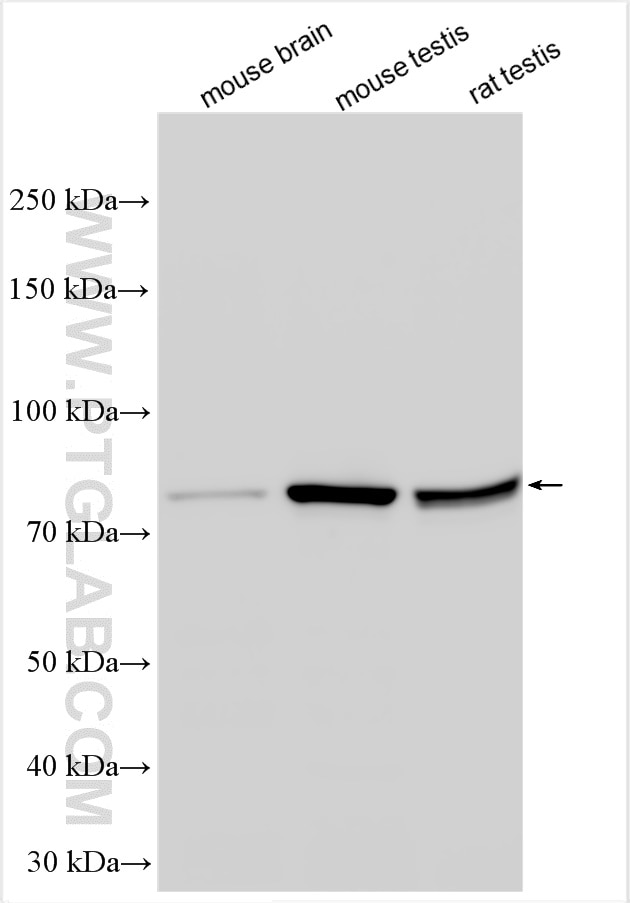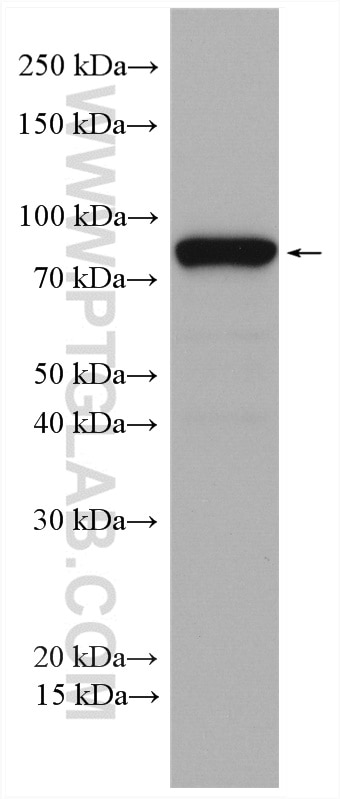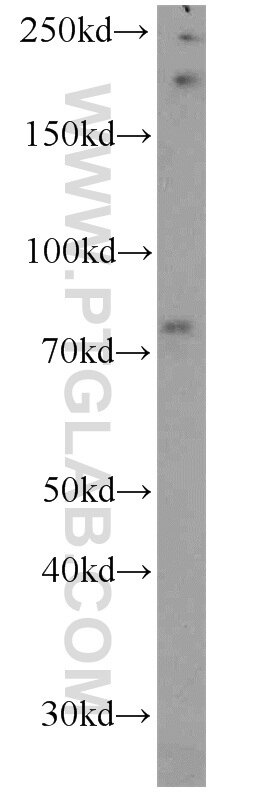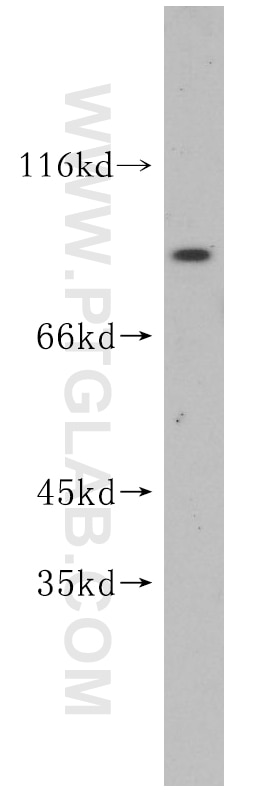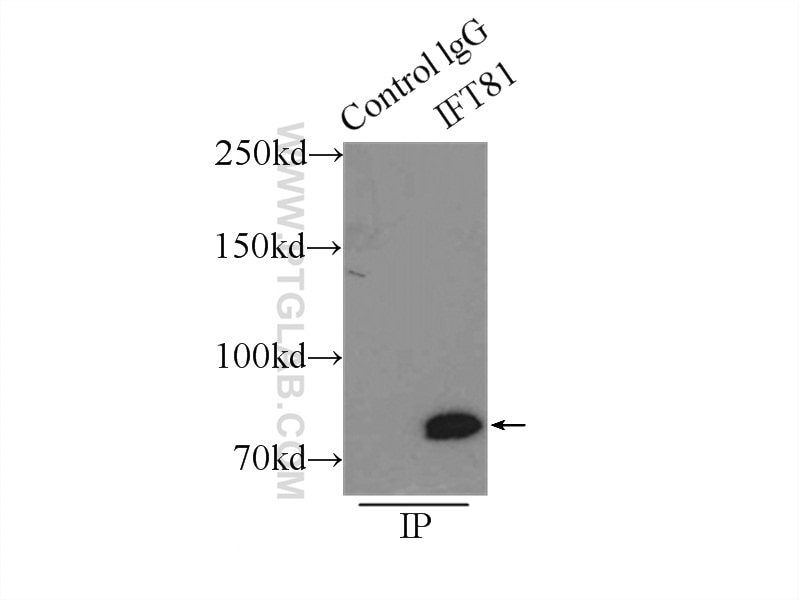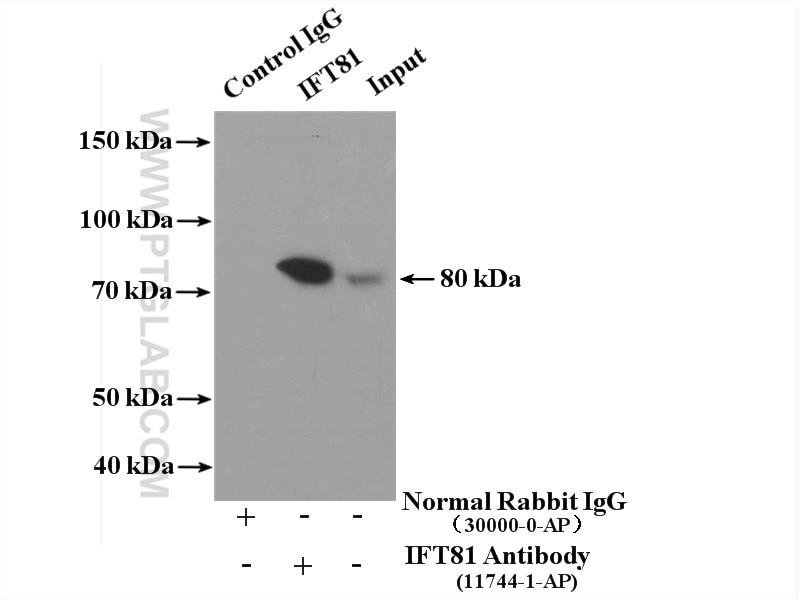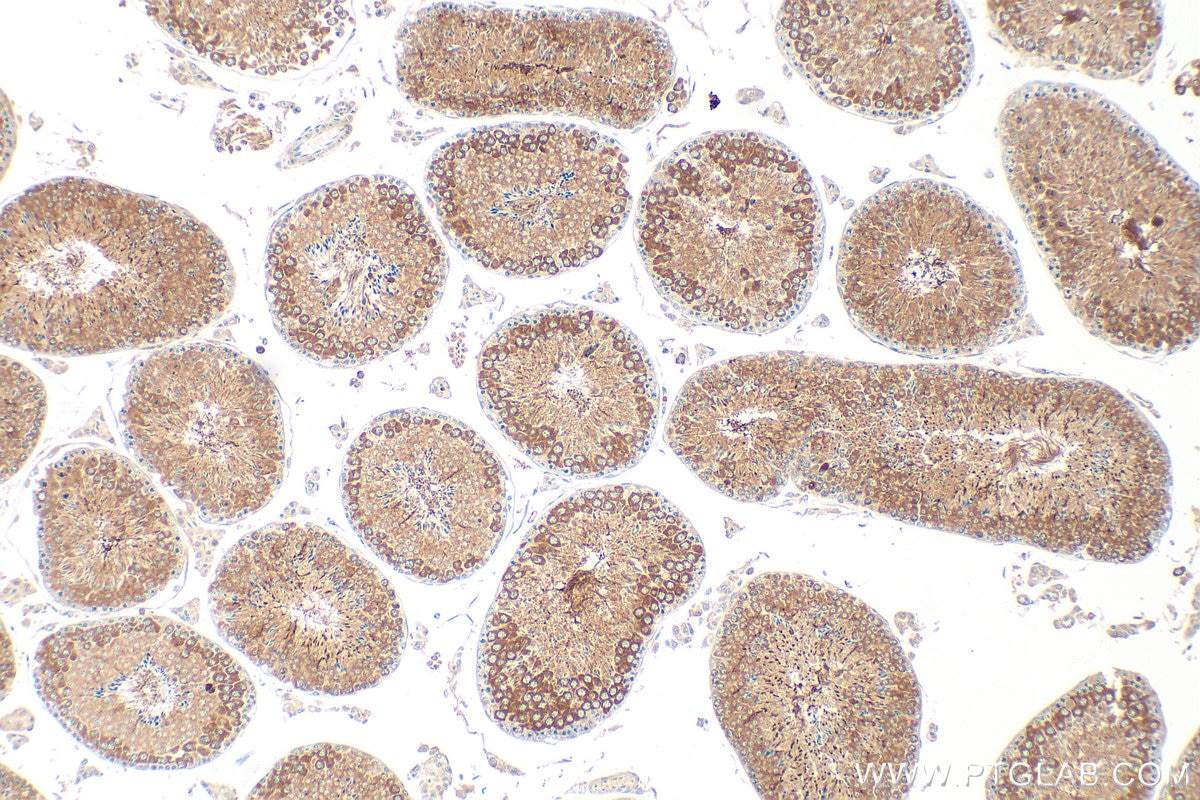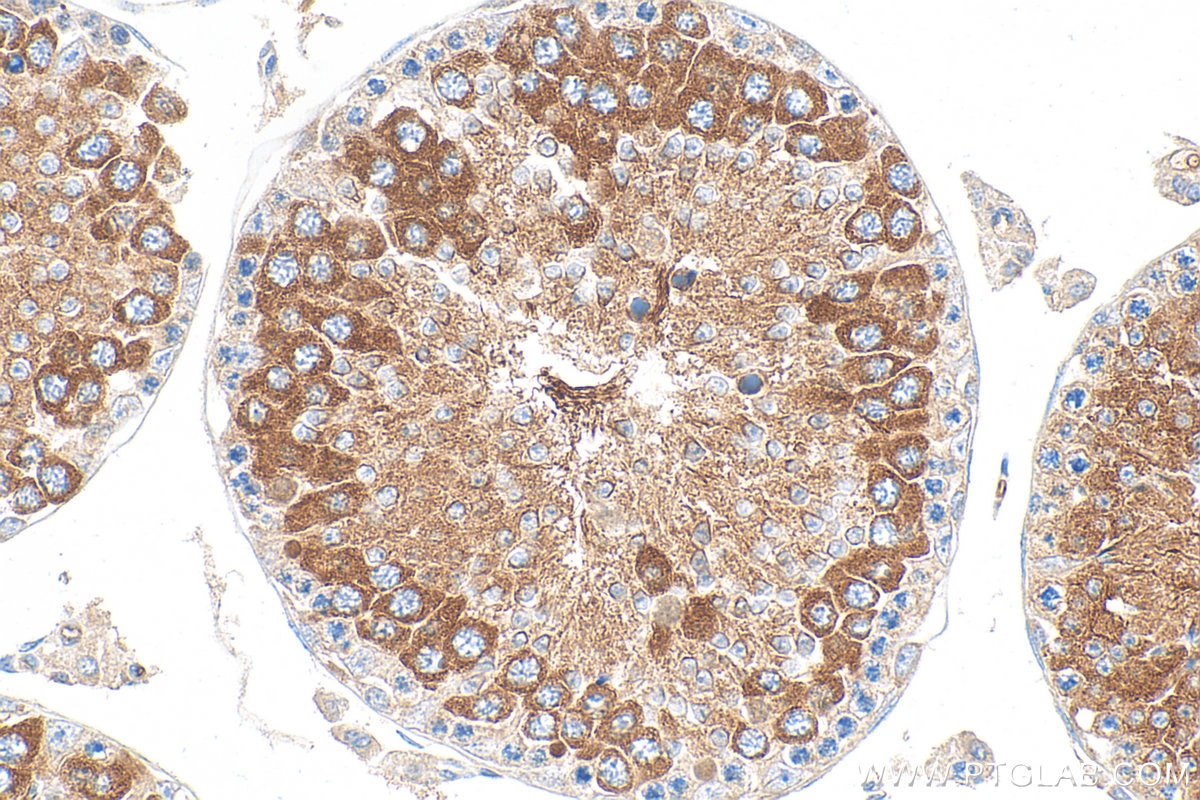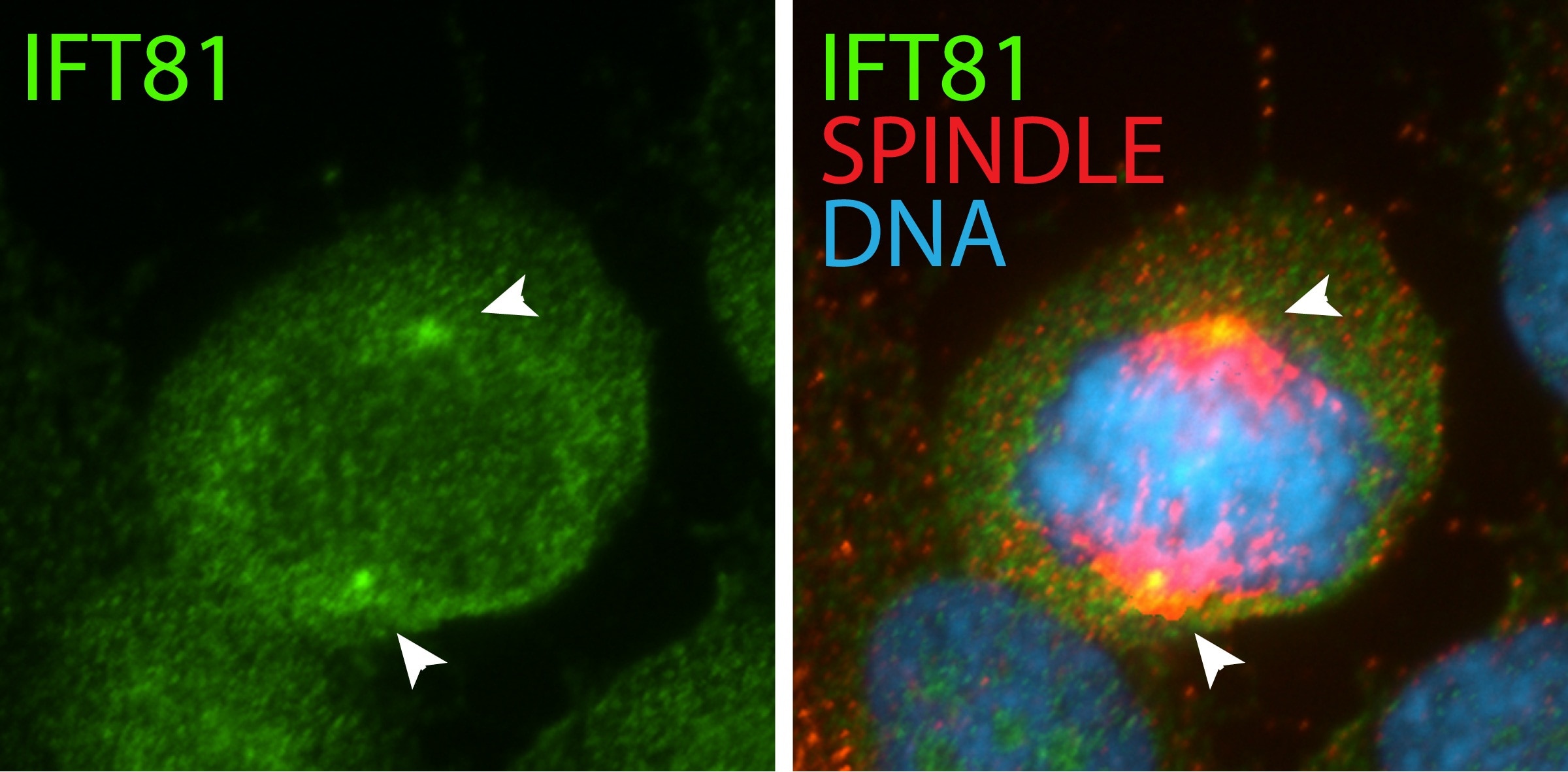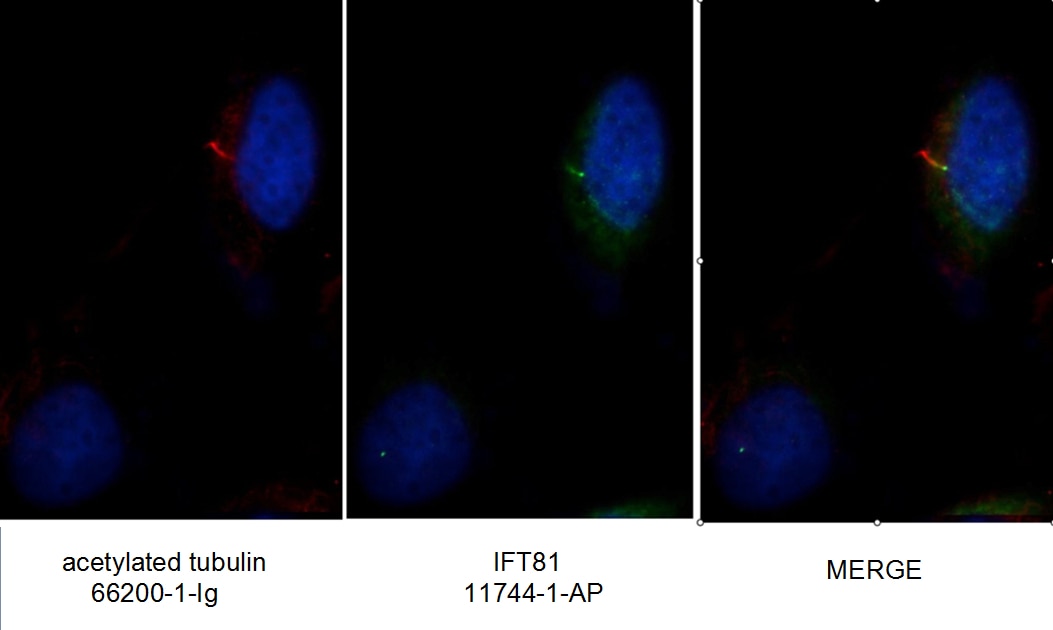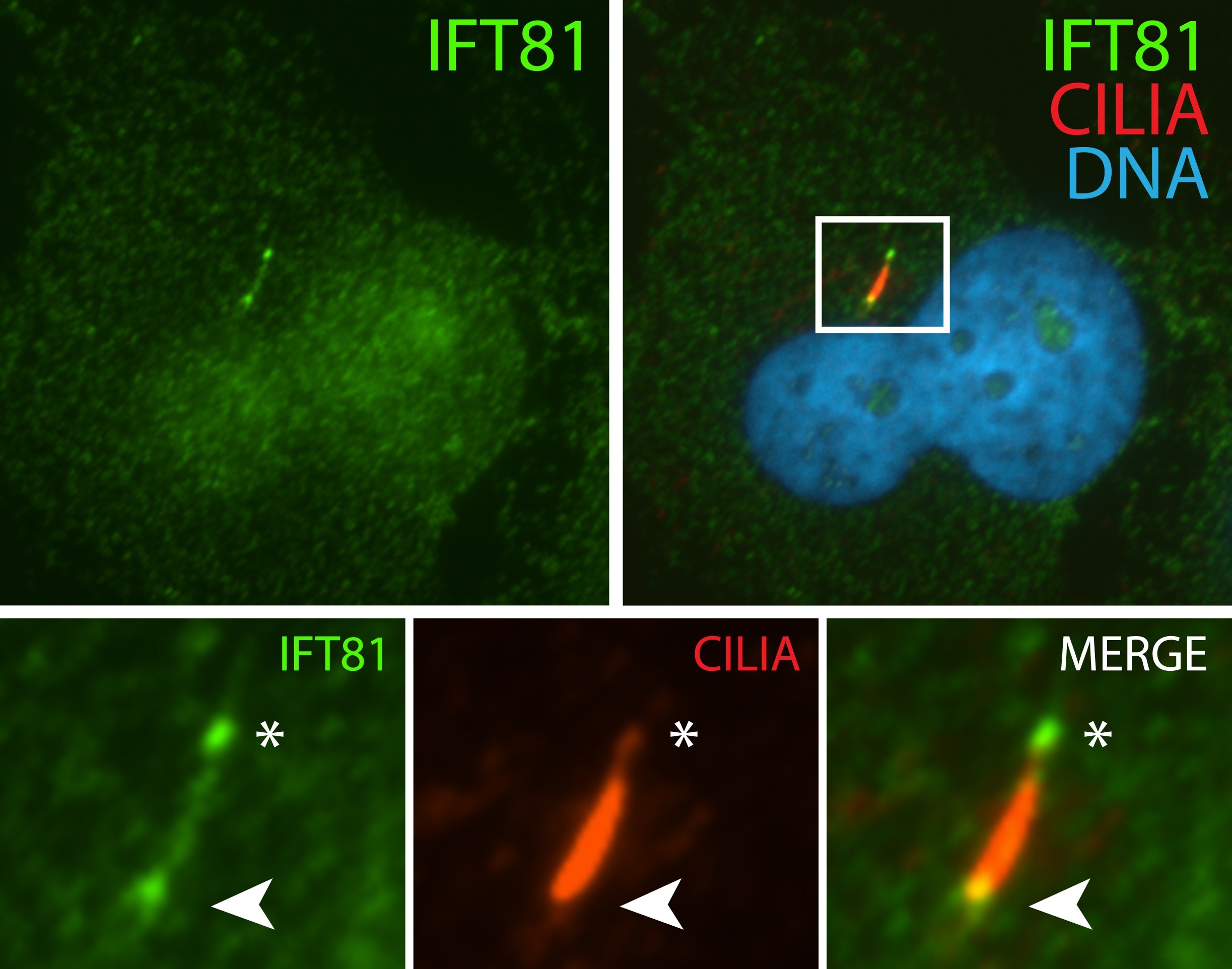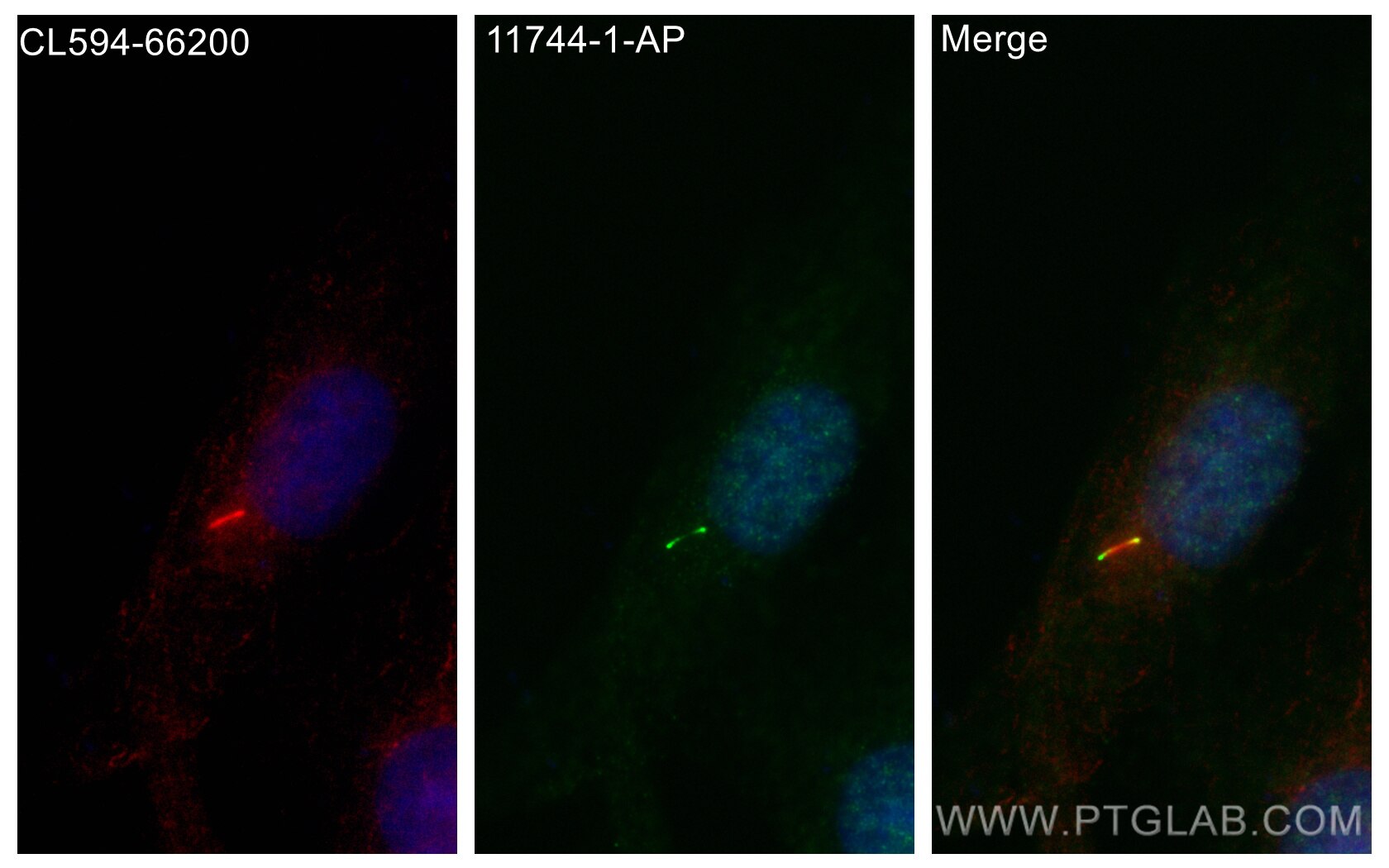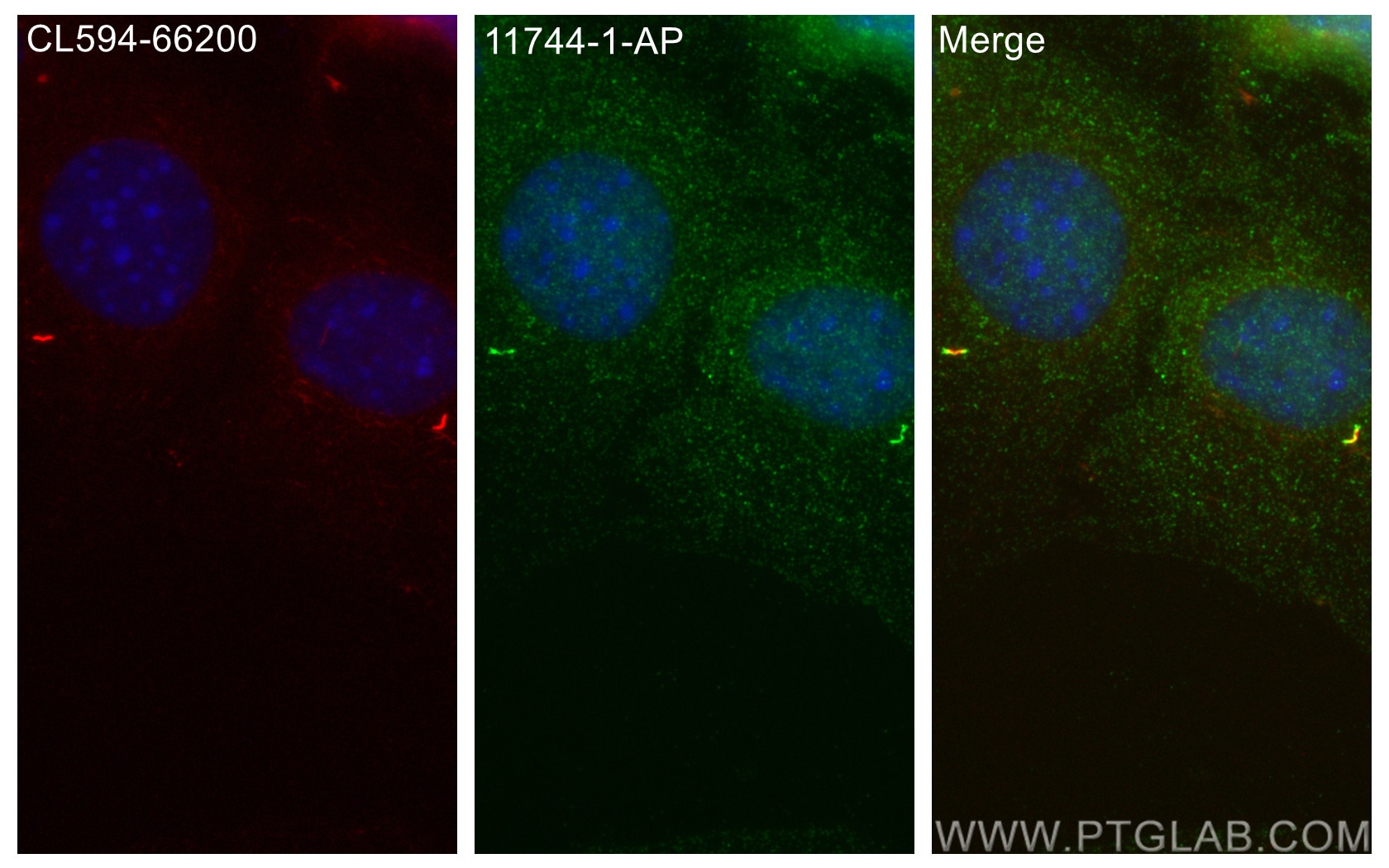- Featured Product
- KD/KO Validated
IFT81 Polyklonaler Antikörper
IFT81 Polyklonal Antikörper für WB, IHC, IF/ICC, IP, ELISA
Wirt / Isotyp
Kaninchen / IgG
Getestete Reaktivität
human, Hund, Maus, Ratte
Anwendung
WB, IHC, IF/ICC, IP, CoIP, ELISA
Konjugation
Unkonjugiert
Kat-Nr. : 11744-1-AP
Synonyme
Geprüfte Anwendungen
| Erfolgreiche Detektion in WB | Maushirngewebe, HEK-293-Zellen, humanes Hirngewebe, Maushodengewebe, Rattenhodengewebe |
| Erfolgreiche IP | Maushirngewebe |
| Erfolgreiche Detektion in IHC | Maushodengewebe Hinweis: Antigendemaskierung mit TE-Puffer pH 9,0 empfohlen. (*) Wahlweise kann die Antigendemaskierung auch mit Citratpuffer pH 6,0 erfolgen. |
| Erfolgreiche Detektion in IF/ICC | C2C12-Zellen, hTERT-RPE1-Zellen, MDCK-Zellen |
Empfohlene Verdünnung
| Anwendung | Verdünnung |
|---|---|
| Western Blot (WB) | WB : 1:1000-1:8000 |
| Immunpräzipitation (IP) | IP : 0.5-4.0 ug for 1.0-3.0 mg of total protein lysate |
| Immunhistochemie (IHC) | IHC : 1:50-1:500 |
| Immunfluoreszenz (IF)/ICC | IF/ICC : 1:50-1:500 |
| It is recommended that this reagent should be titrated in each testing system to obtain optimal results. | |
| Sample-dependent, check data in validation data gallery | |
Veröffentlichte Anwendungen
| KD/KO | See 1 publications below |
| WB | See 26 publications below |
| IHC | See 1 publications below |
| IF | See 34 publications below |
| CoIP | See 1 publications below |
Produktinformation
11744-1-AP bindet in WB, IHC, IF/ICC, IP, CoIP, ELISA IFT81 und zeigt Reaktivität mit human, Hund, Maus, Ratten
| Getestete Reaktivität | human, Hund, Maus, Ratte |
| In Publikationen genannte Reaktivität | human, Maus, Ratte |
| Wirt / Isotyp | Kaninchen / IgG |
| Klonalität | Polyklonal |
| Typ | Antikörper |
| Immunogen | IFT81 fusion protein Ag2339 |
| Vollständiger Name | intraflagellar transport 81 homolog (Chlamydomonas) |
| Berechnetes Molekulargewicht | 676 aa, 80 kDa |
| Beobachtetes Molekulargewicht | 75-80 kDa |
| GenBank-Zugangsnummer | BC029349 |
| Gene symbol | IFT81 |
| Gene ID (NCBI) | 28981 |
| Konjugation | Unkonjugiert |
| Form | Liquid |
| Reinigungsmethode | Antigen-Affinitätsreinigung |
| Lagerungspuffer | PBS with 0.02% sodium azide and 50% glycerol |
| Lagerungsbedingungen | Bei -20°C lagern. Nach dem Versand ein Jahr lang stabil Aliquotieren ist bei -20oC Lagerung nicht notwendig. 20ul Größen enthalten 0,1% BSA. |
Hintergrundinformationen
Intraflagellar transport (IFT), mediated by molecular motors and IFT particles, is an important transport process that occurs in the cilium and has been shown to be essential for the assembly and maintenance of cilia and flagella in many organisms. IFT particles are multi-subunit complexes of proteins that functions to move non-membrane-bound particles from the cell body to the tip of cilium or flagellum, then return them to the cell body. Transport towards the ciliary tip is regulated by the IFT complex B (IFT-B), consisting of at least 15 IFT proteins, in association with kinesin motors, whereas transport from the ciliary tip back to the base is executed by a dynein motor in association with the IFT complex A (IFT-A), currently known to be composed of six IFT proteins. IFT81 is a subunit of IFT complex B.It may play a role in development of the testis and spermatogenesis. There are some isoforms of IFT81 with 73-78 kDa and 43-50 kDa.
Protokolle
| PRODUKTSPEZIFISCHE PROTOKOLLE | |
|---|---|
| WB protocol for IFT81 antibody 11744-1-AP | Protokoll herunterladen |
| IHC protocol for IFT81 antibody 11744-1-AP | Protokoll herunterladenl |
| IF protocol for IFT81 antibody 11744-1-AP | Protokoll herunterladen |
| IP protocol for IFT81 antibody 11744-1-AP | Protokoll herunterladen |
| STANDARD-PROTOKOLLE | |
|---|---|
| Klicken Sie hier, um unsere Standardprotokolle anzuzeigen |
Publikationen
| Species | Application | Title |
|---|---|---|
Cell Dynamic Remodeling of Membrane Composition Drives Cell Cycle through Primary Cilia Excision. | ||
Nat Cell Biol The kinesin-4 protein Kif7 regulates mammalian Hedgehog signalling by organizing the cilium tip compartment. | ||
Nat Cell Biol Systematic proteomics of the VCP-UBXD adaptor network identifies a role for UBXN10 in regulating ciliogenesis. | ||
Nat Commun IFT proteins spatially control the geometry of cleavage furrow ingression and lumen positioning. | ||
Nat Commun Cilia locally synthesize proteins to sustain their ultrastructure and functions. | ||
EMBO J Rabl2 GTP hydrolysis licenses BBSome-mediated export to fine-tune ciliary signaling. |
